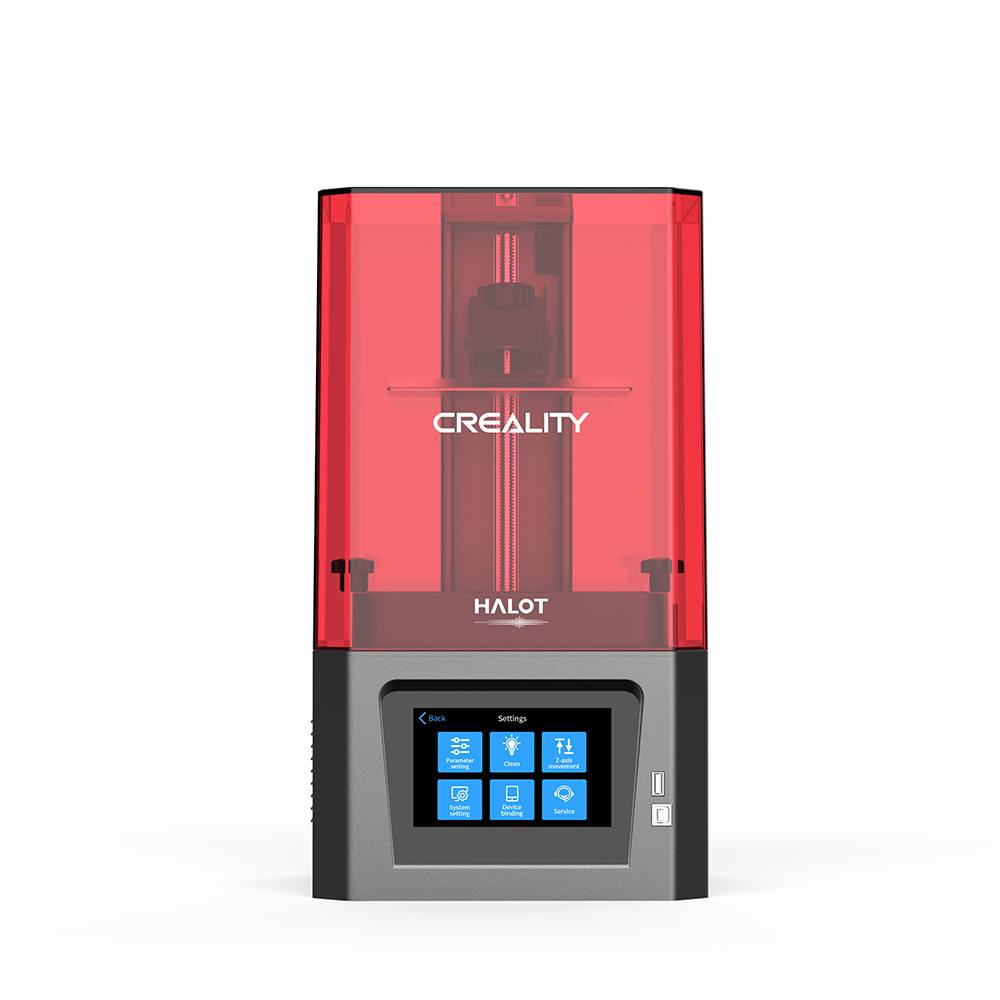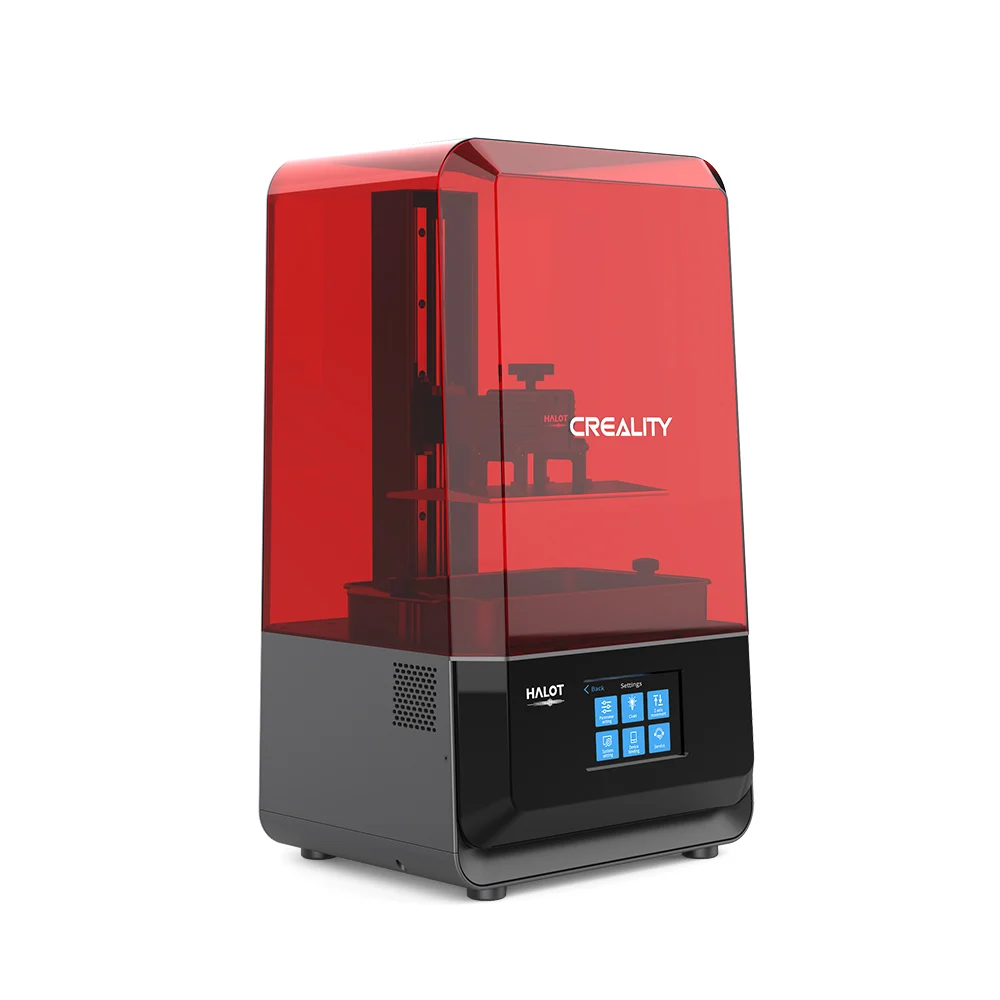Compare Halot One vs Halot Lite
Comparison between the best 3D printers
Choose the best 3D printer at the best price. The cheapest 3D printers are here.
Buy a 3D printer here with 3D Fila.
 |
 |
|
| Model | Halot One |
Halot Lite |
| Printing Material | Resin | Resin |
| Buy Resin for Creality 3D Halot One | Buy Resin forCreality 3D Halot Lite | |
| Estimated price | $250,00 | $400,00 |
| Manufacturer | Creality 3D | Creality 3D |
| Release Year | 2021 | 2021 |
| Print Volume [mm] | 127x80x160 | 192x120x200 |
| Printer Size [mm] | 221x221x404 | 330x301x572 |
| Weight [kg] | 7,1 | 10,6 |
| Power Loss Recovery | NO | NO |
| Technology | LCD | LCD Mono |
| Screen Resolution | 4k | |
| Max Print Speed [s/layer] | 1 | 1 |
| Maximum Resolution [mm] | 2k | 0,01 |
| Processor | ||
| Display | Display touchscreen 5'' | |
| Power Supply | ||
| Connectivity | SD / USB | |
| Operating systems | Windows, Mac, Linux | Windows, Mac, Linux |
| Date of registration in the system | 2022-10-11 | 2022-11-04 |
| Release date | 2021 | 2021 |
| Extra features | Crealitys Halot-One printer stands out with several innovative features. It has a high-resolution touchscreen, providing an intuitive and responsive interface. Its quiet printing capability is remarkable, ideal for environments where noise is a concern. Assembly and setup are simple, with automatic functions facilitating quick start. Among its features, remote monitoring and adjustments via the Creality Cloud app stand out, simplifying remote print management. Replacing the FEP in the resin vat is easy, and the printer even includes extra FEP sheets. Top cover removal detection increases safety by automatically pausing printing. In addition, its integral light source promises high uniformity, optimizing print quality. | Crealitys Halot Lite printer stands out in the mid-size resin 3D printing segment, with a build volume of 192 x 120 x 200 mm and 50 micron resolution. It offers a monochrome LCD for fast and durable printing, and an upgraded light source that ensures over 80% uniformity across the print bed. It includes Wi-Fi connectivity for remote control and updates, an ARM Cortex CPU for efficient performance, and is compatible with Halot Box and Lychee slicing software. It also has an activated carbon filter to reduce odors. |
| Support for multiple colors and materials (AMS and CFS) | NO | NO |
Notes * |
||
| Cost-benefit | 8 / 10 | 8 / 10 |
| Hardware | 0.6 / 10 | 1.2 / 10 |
| Tela | . | . |
| Print volume | 3 / 10 | 3 / 10 |
| Performance | 9 / 10 | 9 / 10 |
Conclusion |
| In comparing the Creality 3D Halot One and Halot Lite, both printers are capable and cater to different needs, yet the differences in price and features present important considerations. The Halot One enters the market at a lower price, making it an attractive choice for beginners or those with budget constraints. It boasts a high-resolution touchscreen interface, quiet operation, and innovative features such as remote monitoring through the Creality Cloud app. With a compact print volume, it's well-suited for smaller projects while ensuring print quality through its effective light source uniformity and safety features. Conversely, the Halot Lite, while more expensive, offers a larger print volume, which can accommodate bigger projects and more intricate designs. It utilizes a monochrome LCD, delivering faster and more durable prints, enhanced by its upgraded light source. The printer also supports Wi-Fi connectivity, allowing for more convenient control and updates. Additionally, features like the activated carbon filter contribute to a more pleasant printing environment by minimizing odors. Ultimately, both models present solid performance ratings, but the choice between them largely depends on the user's specific needs. For those prioritizing cost-effectiveness and ease of use for smaller prints, the Halot One is a commendable option. However, for individuals seeking versatility and enhanced functionality for larger projects, the Halot Lite justifies its higher price. |

